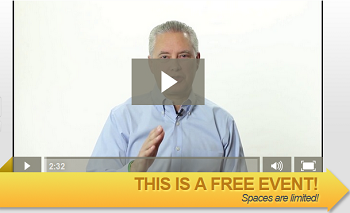Coaching & Developing Others, Leadership, Personal & Professional Development
 There are hundreds of companies large and small that offer services to help leaders grow and get greater results, ours included. This means there is a large market of organizations that look for, secure and use these services to equip their leaders to become more effective. There are many more organizations that create and provide leadership development activities for internal use.
There are hundreds of companies large and small that offer services to help leaders grow and get greater results, ours included. This means there is a large market of organizations that look for, secure and use these services to equip their leaders to become more effective. There are many more organizations that create and provide leadership development activities for internal use.
Yet for every organization (or department or regional office) that does value and develop their leaders, there are many more who don’t.
Today I share with you some of the reasons I have heard, and more accurately the reasons that are unspoken, as to why so many provide so little to support the development of their leaders. Taken individually, they have merit. Put together, they paint a picture of excuses – because most everyone would agree that leaders can be developed and most feel their leaders could improve, yet, many don’t take any action at all.
Here are nine reasons/excuses for this situation.
“It costs too much/isn’t in the budget.” The top of this hit parade is usually money. This reason/excuse is really two in one. The budget is an outgrowth of another item on this list (it isn’t a priority). Budgeting is really just a prioritization tool. By default, the things we do spend money on are deemed as more important than those we don’t. Yes, I know there are seasons or situations in the life cycle of a business where funds really are tight – but that is rarely the real reason. The “costs too much” cousin isn’t always about money alone either; it is often more about the next item on the list. . .
“Leadership training doesn’t work.” Lots of people have gone to leadership training or sent people to leadership training and seen few (if any) results or results that were far too temporary in nature. The training could well be part of the problem, but is seldom all of it. If we want to develop leaders, we must do more than training, and training is part of what is required. The fact is leadership training (or any training for that matter) won’t work alone – the participant must work too.
“Our leaders are doing ok.” This is the complacency argument. Things are “fine.” We don’t have any major problems. That is certainly a better place to be than having lots of leadership challenges, but is fine really what you are aspiring to? Consider this: when leaders become more effective it has a ripple effect across the team, spreading greater productivity and a host of better results. If “ok” is good enough, fine. But I’m betting that isn’t what you really want.
“If you select correctly, you don’t have to do more training.” There are two problems with this reason/excuse: many organizations select based on technical skill or knowledge, rather than leadership skill, and leadership requires a complex set of skills that can’t be mastered quickly. Selection is important, but even perfect selection leaves newly promoted leaders with new skill gaps and opportunities for growth.
“We are too busy to do (leadership) training.” And one of the reasons we are “too busy” is that our leaders are spending time putting out fires, or doing too much of the work themselves, rather than coaching and supporting process improvement. Training requires time (though there are some ways to manage the learning process more effectively), and that time spent can be seen as an investment, to reduce future busy-ness. When leaders lead, they are preventing fires, which change the amount and nature of the work for everyone. (Tweet That.)
“I figured it out, so can they.” This is the hazing mentality. Did you figure it out soon enough and fast enough? Just because you survived it, does that make it the best way to prepare the next leaders?
“It is important, but it isn’t at the top of or priority list.” This is a cousin to several others on the list. And even if people aren’t saying this, through their actions, it is the fact. In the short term, or for a particular time period, this may be a wise choice. However, if leadership training never makes it up the list, the perils and risks to the organizations current and future health are significant.
“We have some internal supervisory/leadership training.” If so, congratulations! My question would be, are you allowing your internal trainers to really help people build leadership skills, or just teach the policies, procedures and laws? Keeping leaders aware of policy and keeping them (and you) out of jail is important, but leadership is far more than that. If you are delivering internal training, make sure it is delivering what you really need.
“We focus on development of middle (or senior) managers.” Organizations that invest in leaders at any level are making a great investment. If that is you, congratulations! And, why would we want leaders at other levels to flounder or have challenges? Consider investing in leaders at all levels. If you would like to think more about the value of training leaders, and starting earlier, please download my free special report, Seven Reasons Why New Supervisor Training Is Essential, now.
So what are your reasons?
Why do I share this? My hope is that some will read this and see themselves in some of these words and decide to move past these and take some tangible action. I also hope this will galvanize internal voices speaking for leadership development to help them advocate more effectively. Lastly, I hope this reinforces the resolve of organizations who do invest in their leaders to stay the course. For all of the other reasons to do it, building your leaders provides you with competitive advantage over organizations that don’t.


 There are hundreds of companies large and small that offer services to help leaders grow and get greater results, ours included. This means there is a large market of organizations that look for, secure and use these services to equip their leaders to become more effective. There are many more organizations that create and provide leadership development activities for internal use.
There are hundreds of companies large and small that offer services to help leaders grow and get greater results, ours included. This means there is a large market of organizations that look for, secure and use these services to equip their leaders to become more effective. There are many more organizations that create and provide leadership development activities for internal use.




